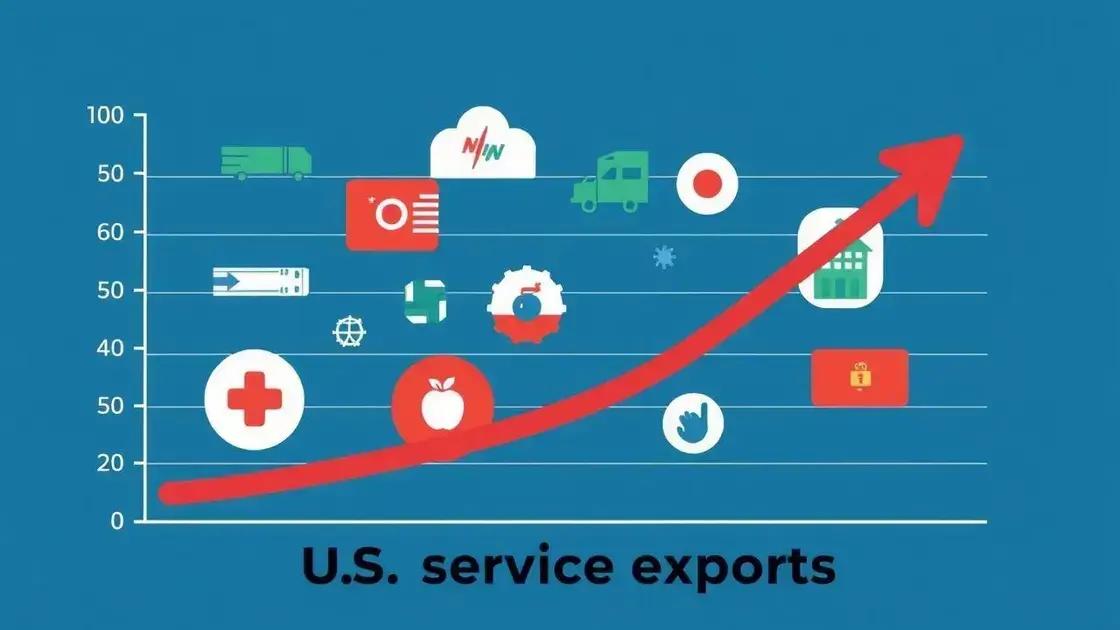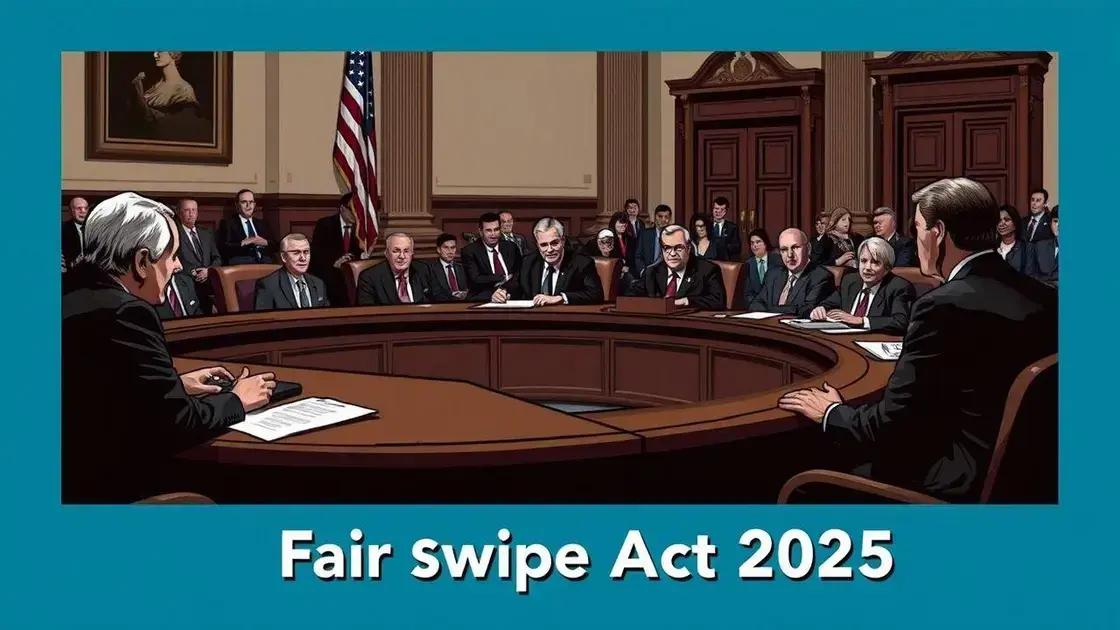Trump proposes changes to government worker classifications

Trump proposes changes to government worker classifications that aim to enhance efficiency, provide clearer roles for employees, and improve overall public services.
Trump proposes changes to government worker classifications that could reshape how federal employees are categorized and compensated. Have you wondered how these changes might affect job security and service delivery? Let’s dive into the details.
Overview of proposed changes
The proposed changes to government worker classifications aim to revamp how federal employees are organized. The idea is to create a system that is more effective and transparent. Under the new plan, job roles would be defined more clearly, enabling better accountability.
Key Features of the Proposed Changes
These changes could significantly impact how government agencies operate. One main focus is on enhancing productivity among government workers. The aim is to replace outdated classification systems with a more flexible model that meets current demands.
- Revised Job Descriptions: Clearer definitions of roles will help set expectations.
- Accountability Measures: New systems to measure employee performance will encourage responsibility.
- Increased Training Opportunities: Employees will receive more training to adapt to new classifications.
- Streamlined Processes: Reducing bureaucracy will make operations more efficient.
As we look at these changes, it’s essential to consider how they might create a positive impact. Many believe that these shifts could lead to a more satisfied workforce. By actively engaging employees in their classification processes, agencies can foster an environment of collaboration.
Expected Outcomes
With the implementation of these new classifications, federal agencies hope to achieve higher standards of service. Improved clarity in roles could lead to better project outcomes and enhanced public trust. Some experts argue that these reforms may also help retain talent within the government sector.
The emphasis on flexibility suggests that as roles evolve, the government can adapt accordingly. This agility means that agencies can respond better to societal changes, ensuring that public services are effective and relevant.
Impacts on government workers
The proposed changes to government worker classifications will have significant impacts on government workers. These new classifications aim to enhance job clarity and performance expectations. By establishing clearer roles, employees can understand their responsibilities better.
Changes in Job Security
One notable effect of these changes is in job security. Employees might feel uncertain as the new classifications are defined. However, with improved performance measures, workers may find new opportunities for advancement.
- Higher Accountability: Workers may be held more accountable for their roles.
- More Performance Reviews: Increased focus on employee performance can lead to more regular evaluations.
- Opportunities for Training: Workers might receive training in their updated roles to enhance their skills.
- Clearer Pathways for Advancement: Employees can see clearer routes for career growth.
Additionally, morale could shift as these changes take effect. When workers understand what is expected of them, they often feel more confident in their roles. This newfound clarity can lead to increased job satisfaction and performance. Engagement might rise as employees see how they fit into the larger goals of their agencies.
Workforce Diversity and Inclusion
The impact of these changes also extends to workforce diversity and inclusion. By creating a structure that values different skills and experiences, agencies can attract a wider array of candidates. This means that a more diverse workforce can improve service delivery and community engagement.
As government agencies evolve, the focus on inclusive practices can lead to innovative solutions. When a variety of perspectives are represented, the likelihood of addressing community needs increases. This shift opens up avenues for dialogue between employees and management.
Public reaction to the proposals

The public reaction to the proposed changes in government worker classifications has been mixed. Many individuals are curious about how these changes will affect their daily lives. Some see potential benefits, while others worry about possible job instability.
Positive Responses
Supporters of the proposals highlight the need for a more accountable and efficient workforce. They believe that clearer job descriptions and expectations will lead to improved performance across agencies. Better organization can also result in enhanced services for the public.
- Increased Efficiency: Many experts think that a streamlined classification system can improve government operations.
- Enhanced Job Satisfaction: Employees may feel more satisfied when their roles are clearly defined.
- Better Public Services: Improved employee performance could lead to enhanced services for citizens.
- Opportunities for Growth: Clearer pathways for advancement may encourage greater employee development.
For these supporters, the changes represent a necessary evolution in the federal workforce. They argue that with proper implementation, employee morale and public trust in government can improve significantly.
Concerns from the Public
On the other hand, there are concerns regarding job security. Some government workers fear that the new classifications may lead to layoffs or job eliminations. Additionally, there is anxiety about how performance reviews will be conducted and how they might impact employees. Public forums have seen citizens expressing worries about fairness in the evaluation process.
Moreover, union representatives stress the importance of ensuring that these changes do not adversely affect workers’ rights. They emphasize that any new system should protect employees while promoting accountability. Balancing these priorities is essential as discussions around the proposals continue.
Comparison with past reforms
The proposed changes to government worker classifications can be viewed in light of past reforms. Understanding these historical shifts is important for grasping the potential impact of the current proposals. Past reforms have often focused on improving efficiency and accountability, lessons that are now being revisited.
Historical Context of Government Classifications
In the past, government worker classifications were often rigid and did not adapt to the changing needs of the workforce. Reforms aimed at streamlining these classifications were introduced, but many faced challenges. While some changes created more clarity, others led to confusion and dissatisfaction among employees.
- Previous Efficiency Initiatives: Earlier attempts sought to reduce bureaucracy, but outcomes varied.
- Employee Pushback: Many workers raised concerns about jobs being at risk.
- Implementation Gaps: Some reforms were poorly implemented, leading to inconsistent results.
- Need for Flexibility: The lack of adaptability in older systems highlighted the need for change.
Today, there is a stronger focus on making classifications adaptable. Unlike past approaches, the current proposals emphasize clarity and flexibility, acknowledging that the workforce must respond to modern challenges. This new focus aims to engage employees in the reform process more than ever.
Learning from the Past
Evaluating the outcomes of previous reforms can provide valuable insights. Many lessons have emerged, particularly around communication and the inclusion of worker feedback. Engaging employees in discussions from the outset may prevent the issues that have plagued earlier reforms. As we analyze the current proposals, it is essential to consider how past experiences shape these new directions.
The emphasis on transparent communication and involvement is a welcome evolution from prior strategies. By fostering a culture of collaboration, the government hopes to implement changes that benefit both the workers and the public they serve.
Future implications for federal employment
The future implications for federal employment are pivotal, especially in light of the proposed changes to worker classifications. These reforms aim to create a more adaptable and effective workforce. As job roles become clearer, federal employees may see new opportunities arising.
Increased Opportunities for Advancement
One key implication is the potential for increased career growth within federal agencies. With a focus on clear classifications, employees can better understand the requirements for advancement. This can motivate them to pursue the necessary training and skills.
- Clear Career Paths: Employees can see specific qualifications needed for promotions.
- Enhanced Training Programs: Agencies may develop tailored training to meet evolving needs.
- Mentorship Opportunities: More experienced workers might take on mentoring roles.
- Improved Job Satisfaction: When employees can advance, morale tends to rise.
With these changes, there is also a potential shift in how agencies attract talent. By offering clearer pathways for career development, they may appeal more to younger generations seeking fulfilling careers.
Adapting to Workforce Needs
Another important aspect is the ability of federal employment to adapt to future workforce needs. As societal demands change, so do the skills required for government jobs. The new classifications aim to introduce flexibility, allowing agencies to pivot as necessary. This flexibility can help agencies remain relevant and effective in serving the public.
Furthermore, agencies will benefit from ongoing feedback from employees, allowing them to adjust policies and procedures as needed. Open communication channels can lead to innovative solutions that directly respond to workforce challenges. As the landscape of federal employment evolves, adapting to these changes will be crucial for both employees and agencies.
The proposed changes to government worker classifications hold promising potential for the future of federal employment. By focusing on clearer roles and responsibilities, these reforms aim to enhance efficiency and job satisfaction among employees. While public reactions vary, the emphasis on transparency and adaptability indicates a shift towards a more engaged workforce. As agencies implement these changes, ongoing feedback and communication will be key to their success. Ultimately, a more flexible and accountable federal workforce can bring about better services for all citizens.
FAQ – Frequently Asked Questions about Proposed Changes to Government Worker Classifications
What are the main goals of the proposed changes?
The main goals are to enhance efficiency, improve job clarity for employees, and ensure better services for the public.
How will these changes affect job security for federal workers?
While there are concerns about job stability, the changes aim to provide clearer roles, which can lead to new opportunities for career advancement.
Will there be increased training opportunities for employees?
Yes, agencies are expected to offer more training to help workers adapt to their updated classifications and improve their skills.
How important is employee feedback during this process?
Employee feedback is crucial as it helps agencies to implement changes effectively and ensure that workers’ concerns are addressed.






